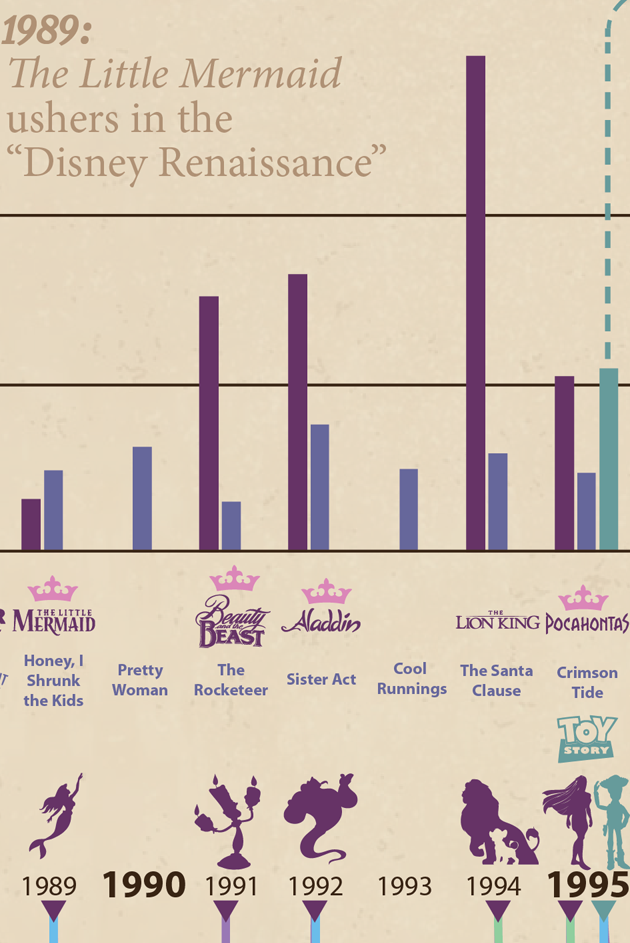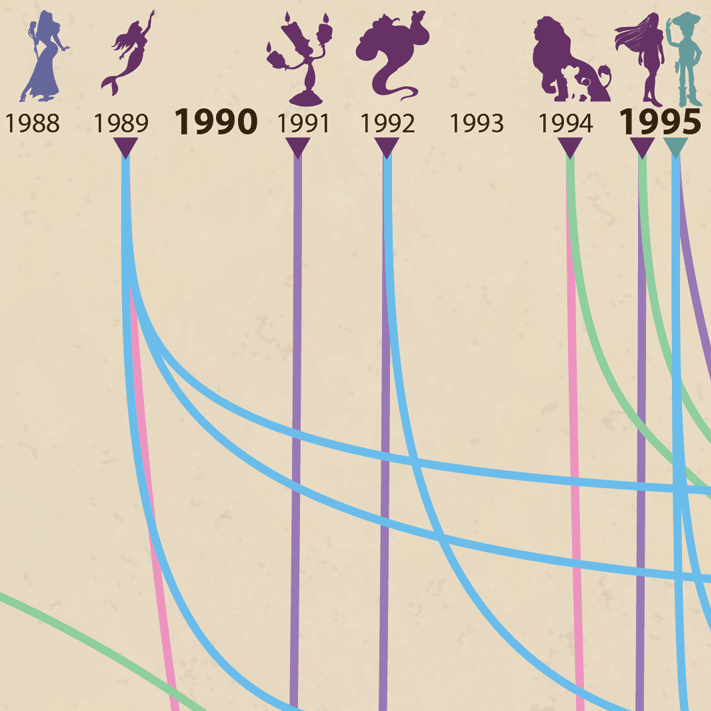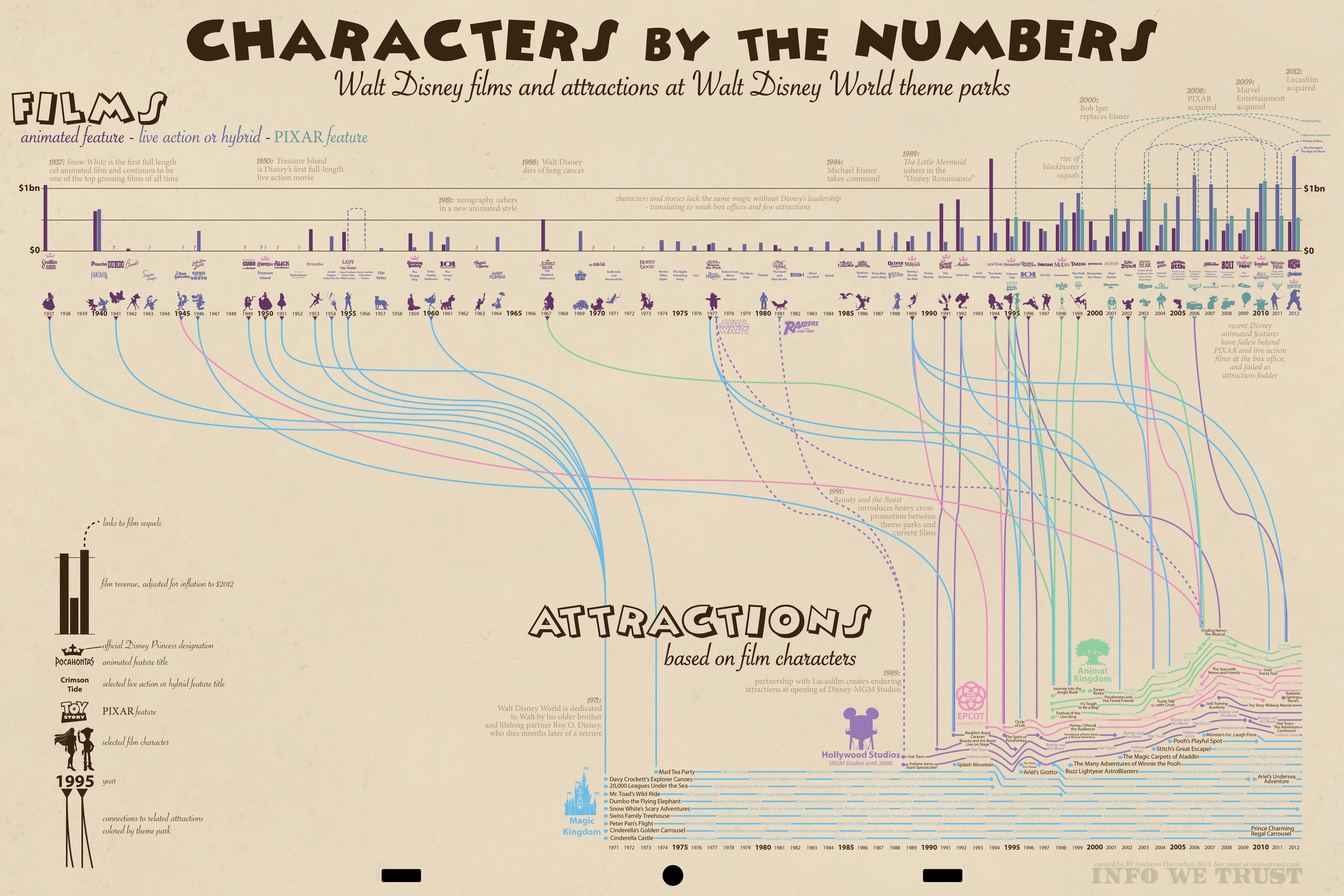Story Points
Several plot points about Disney's evolution can be inferred from
the chart (some of which are labeled in the piece). This is definitely one you will want to click-through and zoom-in to explore:
- creative vacuum that occurred after Walt Disney's death in 1966
- rise of cross-promotion between films and attractions in the 1990's. Attractions are no longer reactive to successful films, but rather proactively open in the same year of the film's release.
- rise of mechanized annual new releases (including reliance on sequels)
- impact of PIXAR and live animation in the 21st century - both at the box office and in the parks
- How lucky I personally was to grow up during the "Disney Renaissance" in animation that began with The Little Mermaid. Here are the films that filled my childhood:

Inspiration & Design
Reading Neil Gabler's excellent biography of Walt Disney was the original seed for this post. It prompted me to map out the history, financial success, and relationships between all parts of the Walt Disney Company: Studio, Consumer Products, Parks & Resorts, and Media Networks (including ABC). I plotted major acquisitions and sales, international expansion, and biographies of influential executives over the years. After all of that two points stuck out:
- it was going to be difficult to get annual reports before the 1990's (the SEC only posts filings submitted digitally for free)
- the core of the company's story is its endearing characters, and how they have been used across the corporation
I cut most of the business stuff out (there is no market cap, or revenue-profit trends by division included) in favor of focusing on the films where characters originate - these are the deposits. Linking these deposits with the box office gross of a movie's first release is a neat approximation of how well they resonate with fans.
Having my deposits, I also wanted to express brand withdrawals in some way. A dedicated theme park attraction is perhaps the most significant withdrawal on a Disney character: it requires millions of dollars, years of planning, and confidence that the attraction will be relevant for more years to come.
Today there are many Disney parks around the world, each with dozens of attractions to consider. Focusing on Florida's Walt Disney World removes the headache of duplicate attractions across parks (which would be an interesting, but separate investigation), while retaining the largest canvas of parks for Disney to paint with its characters. More cynically, if you are a character and you haven't made it into WDW, you may start questioning your relevance.
Data Sources
As I mentioned earlier, Neil Gabler's biography and Disney Annual Reports provided a great foundation. Wikipedia yielded fairly comprehensive lists of both films and attractions. Box office information came from Box Office Mojo and The Numbers. I massaged existing art found across the web into all of the silhouettes included to represented major characters and film titles.
Finally, the look of the piece was inspired by traditional cel animation - complete with appropriate fonts, pastel colors, and those little black holes at the bottom that keep all of your drawings lined up neat.

If you like visualizing data and the movies you may also want to check out the Info We Trust post on LIONSGATE Rising.
Info We Trust is a data adventure exploring how to better humanize information. To learn more read the opening post here. The creator, RJ Andrews, is an engineer and proud Northeastern University and MIT graduate. Please reach out through facebook, twitter @infowetrust, or the contact page.


Little Mermaid had a sequel in 2000.
Comments are closed.